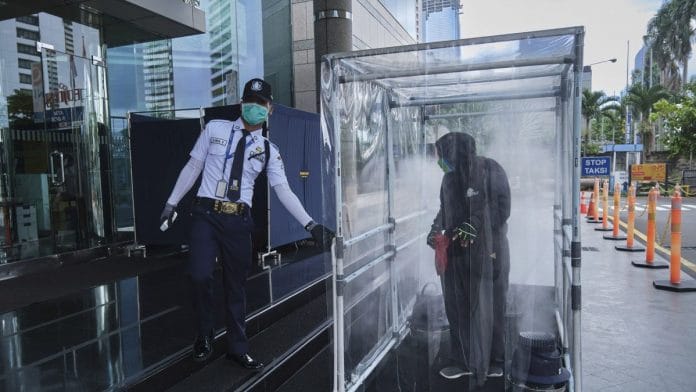The trade-off between health and economic well-being is arriving with brutal speed in parts of Asia.
Governments itching to return to normal activity are being confronted with a spike in Covid-19 infections. That’s forcing them to choose between putting reopening on ice or reviving commerce at the potential cost of lives. Faced with this unenviable bargain, they appear to be leaning toward the latter. It’s a question that leaders hoped they’d never be forced to face, or at least not until economies had already stabilised: What increase in cases is acceptable to get the workforce back on the job?
Indonesia must learn to “live in peace” with Covid-19 until a vaccine is found, President Joko Widodo declared last week. Malaysia is also leaning toward keeping the economy partially open even as cases rise. South Korea has been hit by a new cluster of cases linked to Seoul night clubs just days after easing social distancing rules.
Existing in harmony with a deadly virus may sound like a contradiction. However, Widodo’s remarks point to a resignation that may become standard operating procedure for much of Southeast Asia. Jokowi, as he’s known, says his goal is to flatten the infection curve, and warns that cases will rise before retreating. Indonesia, which balked at a nationwide lockdown, plans to ease social-distancing rules in phases, with the economy to be completely reopened in late July or early August. A weekend jump pushed total Covid-19 cases to 14,265 as of Monday.
Malaysia had barely declared most areas of the economy open when cases started rising again. In response, Kuala Lumpur decided the broad resumption of activity decreed last week can continue but go no further. Borders remain closed and schools are still out. Even Singapore, a far wealthier economy with a much more developed social-safety net and health system, has been put off stride by the virus. The vast majority of its surge in illness the past month has come from tightly-packed dormitories housing more than 200,000 low-wage migrant workers. Outside the dorms, the number of new cases is very low. The city-state remains cautious, and at pains to convey that “circuit breakers” — the local euphemism for partial lockdown — will be eased only gradually.
Also read: Singapore becomes Asia’s most infected nation after China and India
Behind the terrible equation is an economic deterioration that’s exceeding estimates. Forecasters were much too optimistic. It turns out that growth isn’t something you can just reboot. The International Monetary Fund, which last month forecast a drop in global gross domestic product of 3%, now says conditions look worse. The April projection assumed the pandemic would fade in the second half and containment measures could be wound down.
That looks unlikely now, two top officials said last week. Indonesia’s economy shrank 2.4% in the first three months of the year compared to the previous quarter, a far worse outcome than anticipated. In the Philippines, GDP plummeted 5.1% from the previous three months. A contraction is also in store for Malaysia.
The World Bank warned in late March of dire consequences for the already impoverished. The Covid-depression will prevent almost 24 million people in Asia from climbing out of penury, the bank estimated, defining poverty as having $5.50 a day to live off. The bank canvassed a scenario where a further 10 million were prevented from escaping.
This grim calculus — how many people are exposed to infection while rescuing the jobs of others — isn’t present just in developing Asia. South Korea, a beacon in viral containment and well on its way to resuming a semblance of normal life, promptly closed clubs, bars and restaurants after the latest outbreak. This may be little more than a blip on its exit ramp from the severest Covid-19 restrictions. Besides easing its social distancing campaign, the country last week announced the reopening of schools. South Korea has been praised for aggressive testing and contact tracing. It’s right that the U.S. study the nation’s response and try to learn from it.
In developing Asia, the choice between food on the table and minimising risks to the public isn’t always binary. Governments aren’t completely powerless. It makes sense for them to use fiscal stimulus to channel money into medical equipment plants and step up training of health-care personnel. Bolstering sick-leave provisions will make the need to earn less pressing, at least for a time.
For decades, Asia focused on rapid development of infrastructure and neglected social safety nets. When meaningful recovery from the Covid-19 slump comes, investment in more than gleaming skyscrapers and cavernous airports ought to top the menu.
– Bloomberg
Also read: One thing common in most pandemics: They begin their deadly work in Asia or Africa






